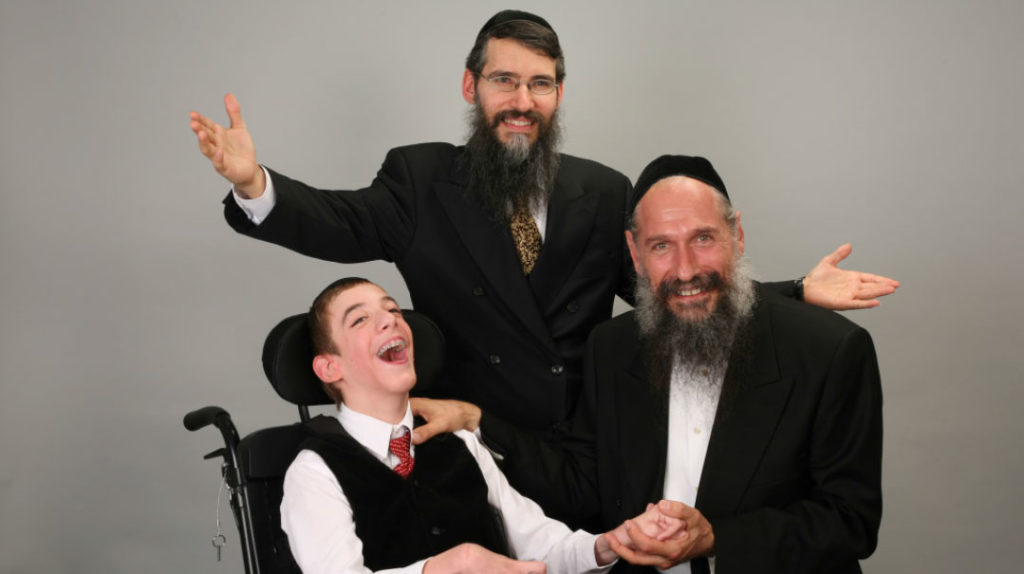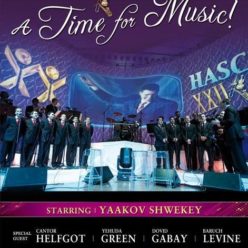What that ratzon tov has turned into makes it truly A Time for Music
As a yeshivah boy from the West Side, I never really had the opportunity to wear a tux and tails. But January 17, 1988, changed all that. It was the first time I went out and rented a tuxedo. I guess you could say it was a night of firsts: The night I produced the very first HASC concert.
Many people have asked me over the years what it was about that night that changed the course of Jewish concerts forever. Of course, there was The Cause: Who wouldn’t want to help out with the amazing work HASC does? Then there was The Venue: Lincoln Center, Avery Fisher Hall. Classy. The Dress Code: Formal attire, black-tie, a first in the Jewish music business. The Price: $500 per ticket — that would separate the men from the boys. The Music: A 25-piece Neginah Orchestra, conducted by Yisroel Lamm (who wrote the HASC theme song). The Magic Duo: MBD and Avraham Fried performing together on a New York stage for the first time. And then there was the production value: With a lighting director, video company, stage props, and surround sound, the event raised the bar for all Jewish concerts until today.
Looking back at 32 years of these concerts, each of them had their moments, and even some unexpected flops (anyone can miscalculate).
At HASC 5, we invited Lou Piniella, a baseball player and the manager of the Yankees, to give an award. When he was introduced, all the baseball fans in the audience started chanting his famous trademark “Lou! Lou! Lou!” but those not in the know thought they were shouting “boo,” and were extremely upset about the extreme disrespect shown to a guest presenter. When Lou came backstage afterward, he was laughing so hard — but he was also grateful to an audience who would never let him be booed.
For HASC 6, we decided to do a tribute to composers, and we had worked really hard to keep Shlomo Carlebach’s appearance a secret. But, as luck would have it, in the middle of Abie Rotenberg’s tribute, the video guy accidentally flashed the image of Shlomo Carlebach backstage, and the audience, delighted by the glimpse that was supposed to be a surprise, broke out into thunderous applause. Abie just looked confused, as he couldn’t view the screen. He couldn’t imagine what he said that caused such a strong reaction from the audience.
Now I’ll share a backstage flop only known by a select few: In the second HASC concert, guest conductor Mona Rosenblum gathered vocalists in a performance called “101 Voices.” It was that night that Mona introduced the super hit “Ribono Shel Olam” to the world. When we got to Avery Fisher Hall, we realized that the stage could only hold 76 voices. Apparently, nobody was bored enough to actually count the people, and the 25 vocalists who didn’t make it to the stage were nice enough not to tell.
For the HASC 7 concert in Radio City Music Hall, we decided to try something new — to make it more like a play, with entertainers acting and a little singing thrown in. There was one segment about the Spanish Inquisition, and don’t even ask how we got MBD to play Christopher Columbus, dressed in robes and a pirate’s hat. (I still make fun of him, and he still hasn’t forgiven me.) Okay, it wasn’t the most successful concert. We called it “The Next Stage,” but it was actually almost the final stage for HASC — which happily turned out to be more resilient than we thought.
In fact, MBD, our dependable regular, always seemed to be in the center of our experiments. In HASC 3, someone thought it would be a good idea to have live dancers accompany him, and decided to hire a secular professional dance troupe. Well, it was clear from the very beginning that these people had never seen how Jews actually dance, and needless to say, it was pretty un-Jewish. We learned our lesson.
Yet despite some awkward moments over the years, there are so many more reasons the HASC motif has continued to flourish. But mostly, it was the achdus and honest hard work of people like Sheya Mendlowitz — the integral force behind the concert idea, Mordechai and Avremel, two great singers who took this concert seriously and made “A Time for Music” shine bright for years to come, and all the talented performers who over the years have kept the phenomenon alive.
And to think, it all started when Sheya called to tell me he’d just spent an amazing Shabbos at Camp HASC, but they were having major financial difficulties and their little-known organization couldn’t attract enough counselors. Maybe, he said, a concert — something really huge and different — could help. Years later, seeing what that ratzon tov has turned into makes it truly A Time for Music.
(Originally featured in Mishpacha, Issue 821)




